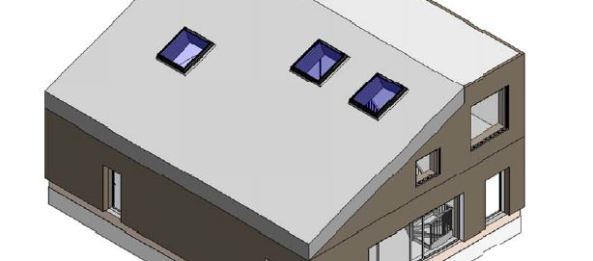Project name: 3D BIM models – a more comprehensive design proces
Project student: Theis Andersen
Publication: En bedre sammenhæng i projektet (Danish, educational) (2013)
Course type: Special project, Autumn 2012
Supervisor: (Al)Fred Heller
Summary: The vision is to develop a web configuration tool through which customers are able to configure the building they want to buy. To be able to do so, the information describing the buildings, the products, characteristics and configuration options must be represented. This is done partly in a Building Information Model (BIM) in 3D CAD model within the tool Revit. The project defines a prototype building in Revit, informs the details in the BIM part and utilizes a set of components and computer programs to compute relevant information on e.g. price, scheduling, energy demand, indoor climate modelling and much more. For this purpose, the following components are applied:
- Rockwool Energy Design (for the Danish building code computations) – alternatively Be10 can be used.
- Sigma (for price calculations)
- Navisworks (for planing)
- Ecotect (for energy and indoor environment, daylight computations)
Most integration between the components has been possible, but the integration with Be10 did not work within newest versions, hence Rockwool Energy Design was applied instead.
Vision talk: Decision making towards a sustainable future demands interoperability between tools that generate and collect information on the decisions to be made. For building design, design tools must be supported dynamically by technical software from many different technical domains. It is not probable that there will be a single tool, handling all the computations. Hence a platform model is preferable.
 Next step: The current project is a small step in a long process. There is a need for interoperability, getting the tools to work together in a automated way. The BIM data models are to be expanded, pricing more realistic and much more. The whole integration with the web interface for configuration is not yet taken up. A simple way of doing so could be to dump the intermediate results and information in a file-tree to be utilized from a web solution.
Next step: The current project is a small step in a long process. There is a need for interoperability, getting the tools to work together in a automated way. The BIM data models are to be expanded, pricing more realistic and much more. The whole integration with the web interface for configuration is not yet taken up. A simple way of doing so could be to dump the intermediate results and information in a file-tree to be utilized from a web solution.



